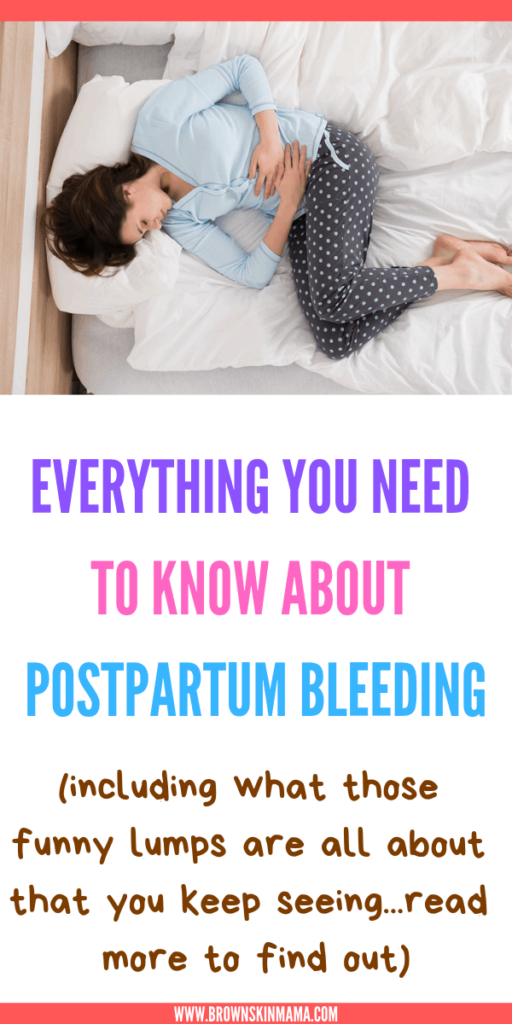Lochia stages postpartum
If you have ever had a baby before then you will already know what is going to happen to your body after you give birth.
If you are not familiar with childbirth and what happens postpartum then there is probably a lot that you still have to learn about.
During the postpartum phase of your pregnancy, (I love to call it the fourth trimester because it fits so well) many changes will be going on within you from your emotions right up to physical bodily changes.
The fourth trimester is rightly coined because even though you have already given birth there is still a period of adjustment that you have to go through.
That period of adjustment is just like another trimester of pregnancy.
Anyway, before I digress too much let’s go back to discussing lochia.
What is it? and what are the different lochia stages?
***Please note that this site uses affiliate links. If you would like to read the legal stuff you can do so here
What is lochia?
Lochia is a discharge that comes out of a woman’s vagina after she has given birth. It is a mixture of blood, mucus and uterine tissue.
Every woman that gives birth will experience this no matter if it was via cesarean section or vaginal birth.
Lochia can last up to 6 weeks after you have given birth.
Although this sounds like a long period of time it is fairly standard amongst most women.
The first stage of your lochia will be quite red in color due to the amount of blood it contains but as time passes the red color will become less intense and it will become more clear.
The first few days of seeing your lochia will seem like very heavy bleeding and will appear very much like your menstrual period.
Lochia also has a strange smell. If you are not expecting it, it can take you by surprise. Consider yourself warned!
The smell is a little fishy but after some time it will stop along with your postpartum bleeding.

What causes lochia?
Lochia is caused when the placenta is separated from the uterus.
After you deliver your baby you also have to deliver the placenta.
When this happens the blood vessels that were attached to the placenta are now left unattached to anything and are, therefore “free” causing the blood loss that you are seeing.
As your uterus contracts, it closes off the open blood vessels. This is why it is important for your uterus to contract after birth and why your midwife or doctor will pay close attention to it.
As the days continue to pass more and more of the blood vessels will get tied off and the blood in your lochia discharge will be reduced to almost nothing.

There are 3 stages of lochia that you need to be aware of and they are:
Lochia Rubra – The first stage
Lochia Serosa – The second stage
Lochia Alba – The third stage
Each of the lochia stages have a period of time that they last for. I will explain a little more below.
Related posts:
- Postpartum alopecia: Heres what you need to know
- 10 Postpartum complications you need to be aware of
- The best postpartum pads for those first few weeks after delivery
The first lochia stage is called Rubra
Rubra is the first lochia stage of your postpartum bleeding and will usually last for up to 4 days.
This is the time where you will experience the most postpartum cramping as your uterus begins to contract in order to restore its original size and to tie off the loose blood vessels.
Breastfeeding your newborn will also cause you to have postpartum contractions. This is because when you breastfeed, oxytocin is released which causes your uterus to naturally contract.
During this time you will notice that your bleeding will be bright red as the blood is expelled from your body.
Rubra is the closest stage to resembling your menstrual period.
You may also notice that you will pass the occasional blood clot too. This is completely normal!
If your blood clots are very big then you may want to contact your midwife or healthcare provider just to make sure there is nothing too serious happening.
If the blood clots are very large then it could be an indication that some of your placenta still remains inside you. You will need to see a doctor asap if this is the case.

Lochia Serosa
This is where you will find that most of your bleeding will have dried up. This is because your uterus will have had more time to contract and tie off the loose blood vessels.
Your lochia will now have changed from a bright red color to light pink to an almost brownish color.
This stage can last up to 10 days after delivery.
At this stage, the lochia serosa will contain less red blood cells and more white blood cells.
There will also be discharge from the placenta and mucus from your cervix combined.
Lochia Alba
Lochia Alba is the final stage of your postpartum bleeding and also the stage that takes the longest amount of time to pass.
At this point, your lochia will be a yellowish white color.
The discharge will be made up of mucus, white blood cells, and skin tissue.
This part of the process can take anything from 10 days up to six weeks.
How do I know if my bleeding is normal?
First of all, if you feel something is not right always check it out. It’s always better to be on the side of caution.
There are also a few other things that you need to be aware of and take note of.
If you sit down for a long period of time, when you do eventually stand up you may notice a sudden gush of blood.
This is because whilst you have been sitting a pool of blood has been collecting inside you.
Strenuous exercise will also cause you to bleed a lot more so you must take it easy and rest through the first few weeks after giving birth.
You may also feel clots being expelled from your body. I will tell you, this may feel extremely strange the first few times you experience it.
If you do experience this you should just head to the bathroom to clear it up. You may need to change your sanitary towel or you may be able to remove the clot using a piece of tissue.
I know it all sounds incredibly gross but trust me you are not experiencing anything different to any other woman that has ever given birth.
You will need to get further checks if your blood flow in the first few days remains bright red for a longer period of time than the 4 days after birth.
This is really important to check out as you could be experiencing a postpartum hemorrhage.
If your lochia is still very foul smelling after the first few weeks then you need to let your doctor know as you could have an infection.

Women in the postpartum bleeding stages
Final thoughts on the stages of lochia bleeding
Postpartum bleeding can be quite heavy to begin with so you may want to think about getting some really good postpartum pads such as the ones listed here.
I would also advise that you get some bedding protection as well to make sure your mattress is well protected.
The best type to get to keep leakages away from your mattress are these.
Although postpartum bleeding is not particularly enjoyable, it will pass and you will get used to a routine with your baby.
Related posts to the postpartum phase:
- 4 Ways to help your uterus shrink after birth
- Postpartum headaches everyday: Why you are getting
- 12 Things not to do after giving birth
- The 4 best postpartum girdles every mama needs







Leave a Reply
You must be logged in to post a comment.